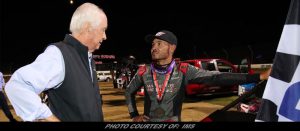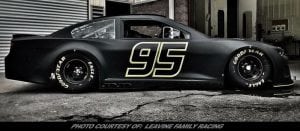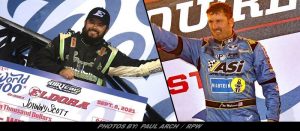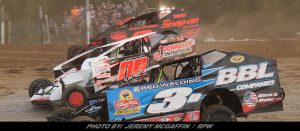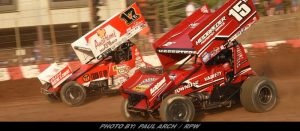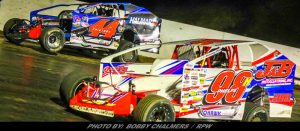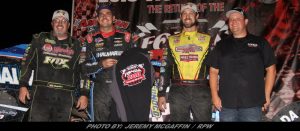Kurt Busch Describes “Incredible Sensation” Of 200 MPH Lap At Texas
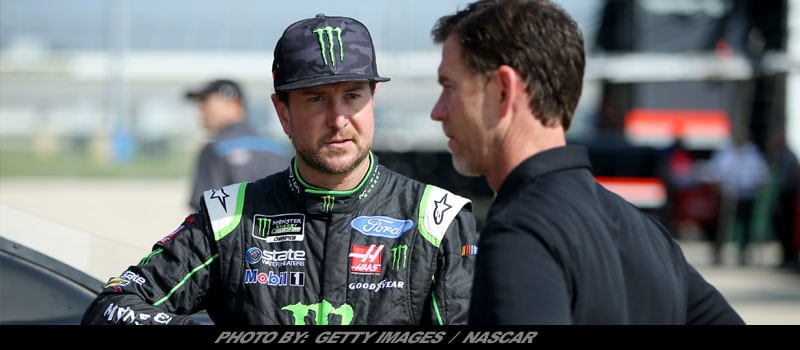
Column By: REID SPENCER / NASCAR – FORT WORTH, TX – Tony Stewart had enjoyed unique status at Texas Motor Speedway – until Friday afternoon, that is.
Before Monster Energy NASCAR Cup Series Coors Light Pole Qualifying for Sunday’s AAA Texas 500 at the 1.5-mile track (2 p.m. ET on NBCSN), Stewart had been the only driver to run a time trials lap at 200 mph or more, a feat he accomplished in the second round of knockout time trials on Oct. 31, 2014.
But on Friday afternoon, Stewart’s record lap at 200.111 mph fell five times over. In the final round Kyle Busch ran 200.252 mph. Erik Jones completed a lap with an average speed of 200.326 mph. Kevin Harvick ran 200.378 mph, and Denny Hamlin recorded the second fastest speed at 200.915 mph.
But Kurt Busch topped them all, covering the distance in 26.877 seconds (200.915 mph) to set a qualifying record not only at Texas but also for any 1.5-mile intermediate speedway.
Though there’s no speed trap at the entrance to Turn 1 – as there is at Auto Club Speedway in Fontana, Calif., for instance – Busch’s No. 41 Stewart-Haas Racing Ford had to be approaching 220 mph before he lifted for the first set of corners.
“(Turns) 3 and 4 is an incredible sensation,” Busch told the NASCAR Wire Service. “Once the car goes into the banking, it travels. The suspension collapses in the car and the car gets lower to the ground and picks up speed because you are lower to the ground and have less drag. It’s a sensation that’s hard to describe. When you have that grip level in the car, it gives you the feeling that you can just put it down to the floor and there won’t be any consequences.
“Turns 1 and 2 are where I think the lap times come from, if you can get it to hook and stay right on the bottom, because that end of the track is a lot flatter. You have to back out of the gas all the way. Then in 3 and 4, you can hold it wide open. Both ends of the track are very different. It’s a cool sensation going through 3 and 4 almost holding it wide open.”
For Busch, the speed in his car held up in race trim. In much warmer conditions, he was fastest in Saturday’s first practice session, posting a lap at 191.788 mph.
DALE EARNHARDT JR. JOINS TEXAS MOTORSPORTS HALL OF FAME
It was completely appropriate that Dale Earnhardt Jr. and NASCAR Vice Chairman Mike Helton were honored during the same Texas Motorsports Hall of Fame ceremony, given the mutual respect and admiration the two men have for each other.
Earnhardt was the latest inductee into the hall, and Helton received the Bruton Smith Legend Award during a luncheon in the Grand Ballroom at Texas Motor Speedway.
Helton was a good friend of the late Dale Earnhardt Sr., and that association continued into the next generation. Though Helton has some Earnhardt stories he said he will take to the grave, he did share two instances that underscored his closeness with the Earnhardts.
The first came less than five months after Earnhardt Sr. lost his life in the 2001 Daytona 500.
“We’ve had a lot of conversations about what is your favorite Dale Jr., moment, and there’s actually two of them, and they happened in the same year,” Helton said. “The first one was in July, the Coke Zero 400 win in 2001. The whole industry needed a healing moment – and that was it.
“The second one was in the same year, but it was in September at Dover, when after 9/11 we had skipped New Hampshire (which was postponed after the World Trade Center attacks). So we go to Dover for the first race back after 9/11, and Dale Jr., wins that. Again, we all needed a big healing moment and Dale Jr., helped us through.”
Earnhardt Jr. credited Helton with providing invaluable guidance throughout his career.
“I can promise you, I wouldn’t be the person I am today without this guy right here as part of the sport,” Earnhardt said, as he and Helton shared the stage. “He not only led a lot of us in the sport, he taught my wife and I a lot of personal lessons.
“When I lost my father, I leaned on a lot of people, but I didn’t lean on anybody more than (Helton). He’s really been incredibly impactful to me throughout my life. The sport has a lot of superstar drivers, but this guy here is a superstar. He’s not on TV, but he’s a superstar in this sport.”
SOME EYE-OPENING NUMBERS IN THE PLAYOFFS’ ROUND OF 8
Is Monster Energy NASCAR Cup Series points leader Martin Truex Jr. a shoo-in to make the Championship 4 race at Homestead-Miami Speedway?
Maybe. He has a big enough lead that he could clinch a spot in the Championship 4 on Sunday at Texas without winning the AAA Texas 500. If a Playoff driver other than Truex or Kyle Busch takes the checkered flag, Truex can clinch with a lead of 56 points or more over the second-place non-winning Playoff driver.
If Busch or a non-Playoff driver happens to win, Truex will clinch if he holds a lead of 56 points or more over the third-place non-winning Playoff driver.
On the other hand, Truex has three DNFs (did not finish) at both Texas and Phoenix for a total of six. The other seven Playoff drivers have a combined seven DNFs at the two tracks. Though Truex is a strong bet to advance, he’ll have to avoid calamity – and that’s not a guarantee.
Interestingly, the only two Playoff drivers without a DNF at either track are last week’s Martinsville combatants, Denny Hamlin and Chase Elliott. Hamlin has a combined 47 starts at Texas and Phoenix. Elliott’s sample size is much smaller – three starts at each track.
But if Elliott decides to get some payback for last Sunday’s wreck and has the opportunity to do so, Hamlin’s unblemished streak could end.
Elliott has the best combined average finish at the final two tracks in the Round of 8 – 6.0 at Texas and 9.7 at Phoenix, again with a small sample. The second-best combined average finish belongs to seven-time champion Jimmie Johnson, with 8.1 at Texas and 9.0 at Phoenix in 56 starts combined.
The driver who scored the highest number of stage points in the spring races at Texas and Phoenix is Ryan Blaney, who will start eighth in the AAA Texas 500. Blaney claimed seven stage points at Phoenix in March and won the first and second stages at Texas (worth 10 points each) in April before finishing 12th.
In five starts at Texas, however, Blaney has by far the worst average finish (27.6) but has come home 12th in each of the last two races in Fort Worth.
Chase Elliott and Brad Keselowski scored the second most stage points on the initial visits to the tracks this year – 23 each.


